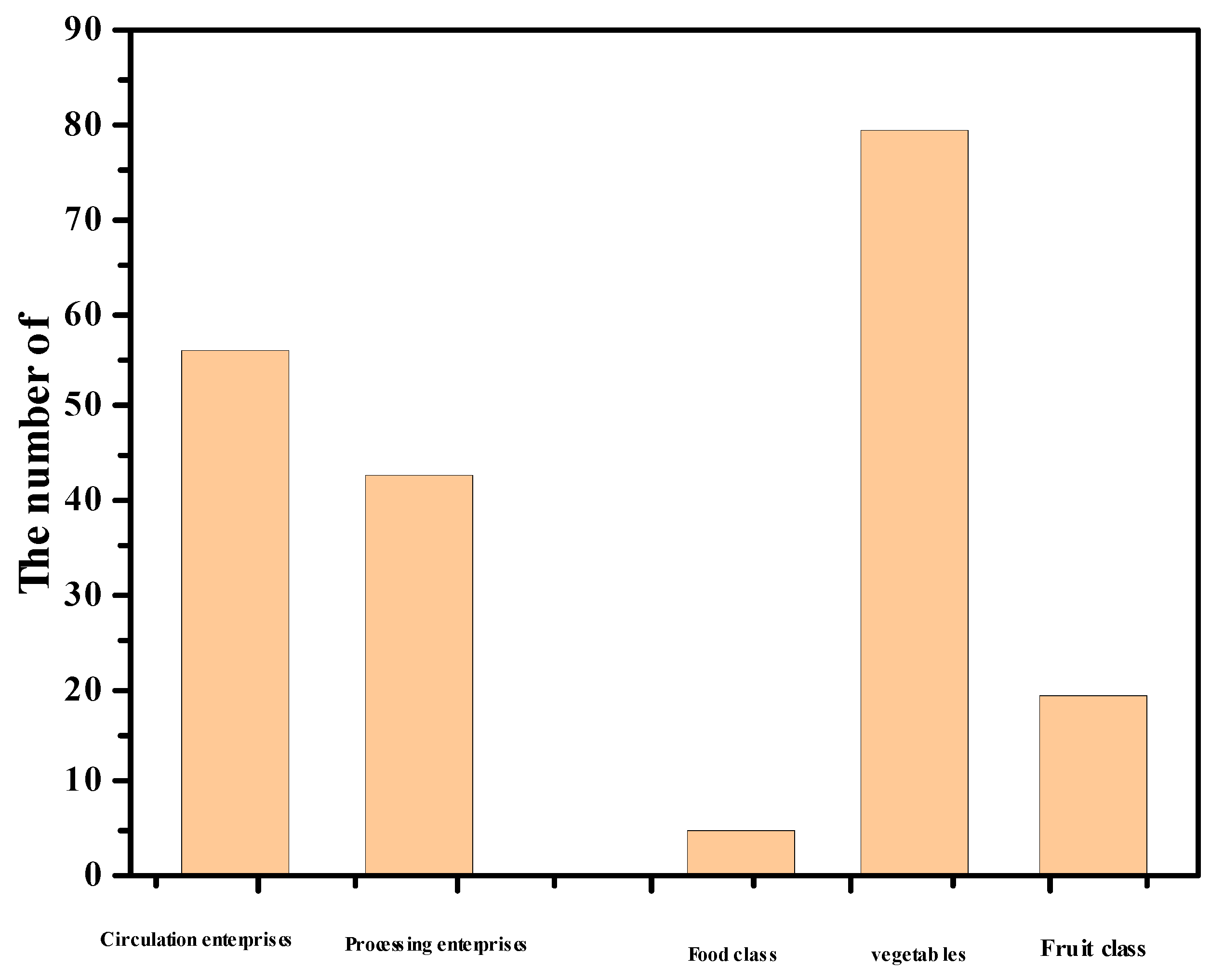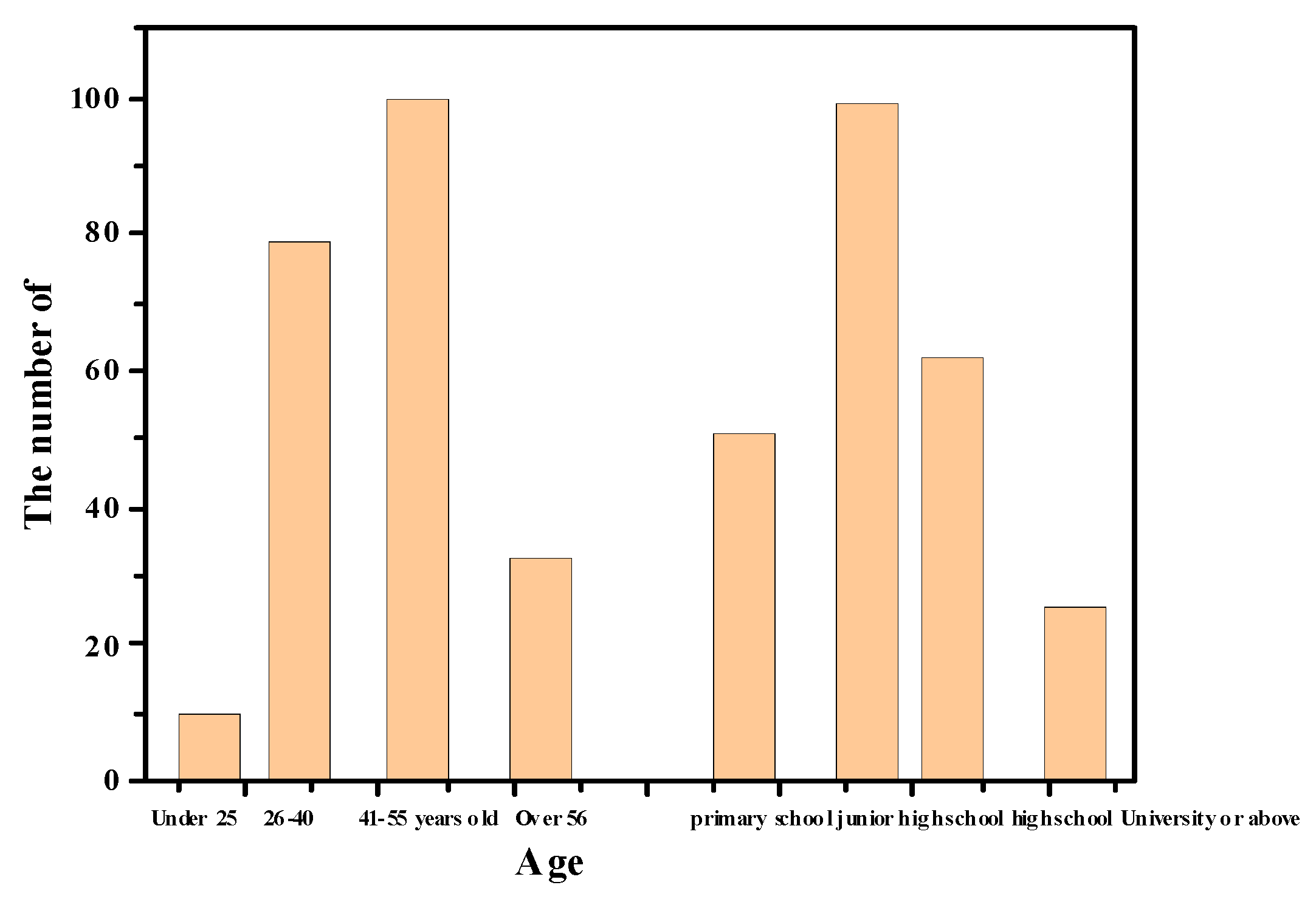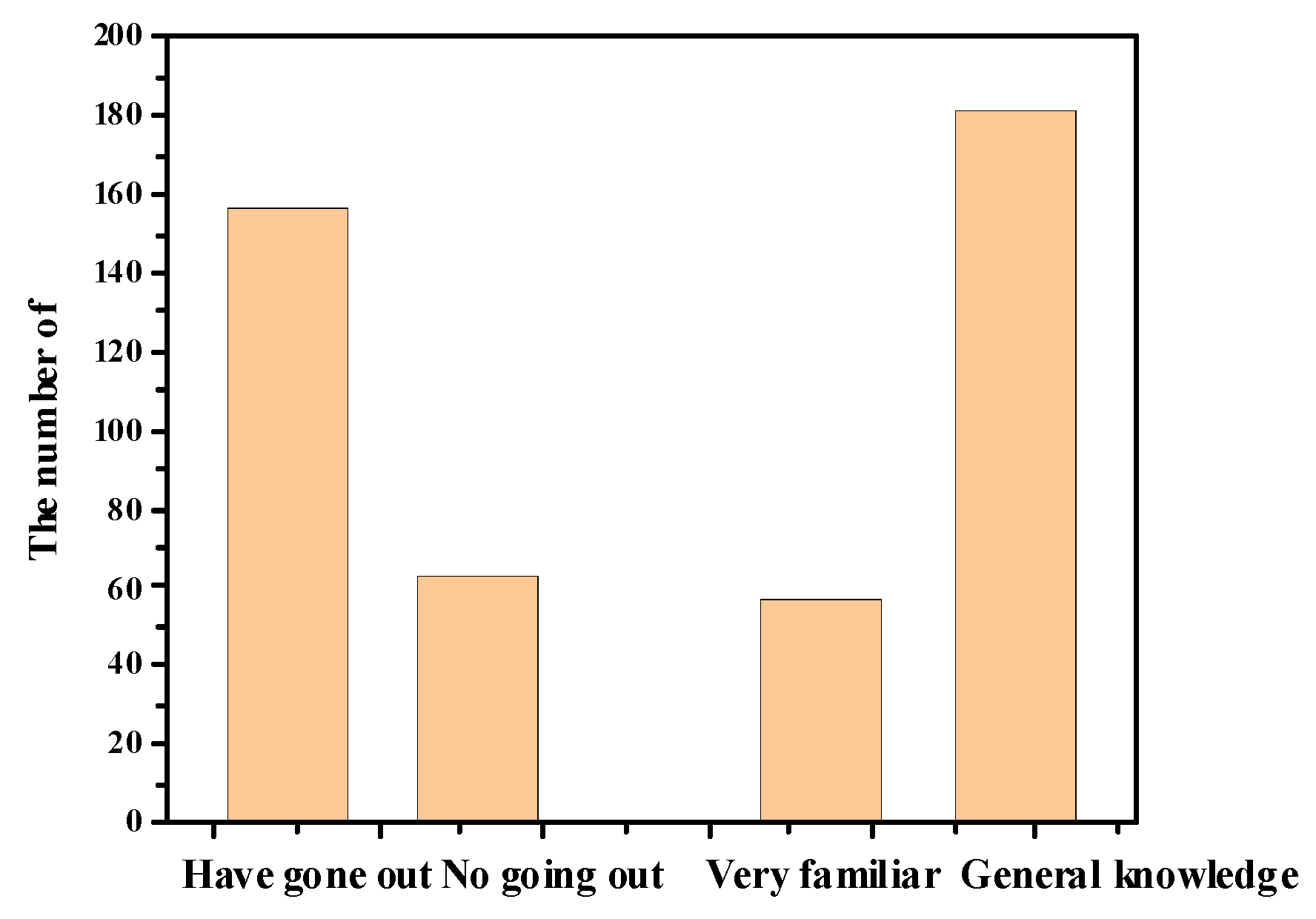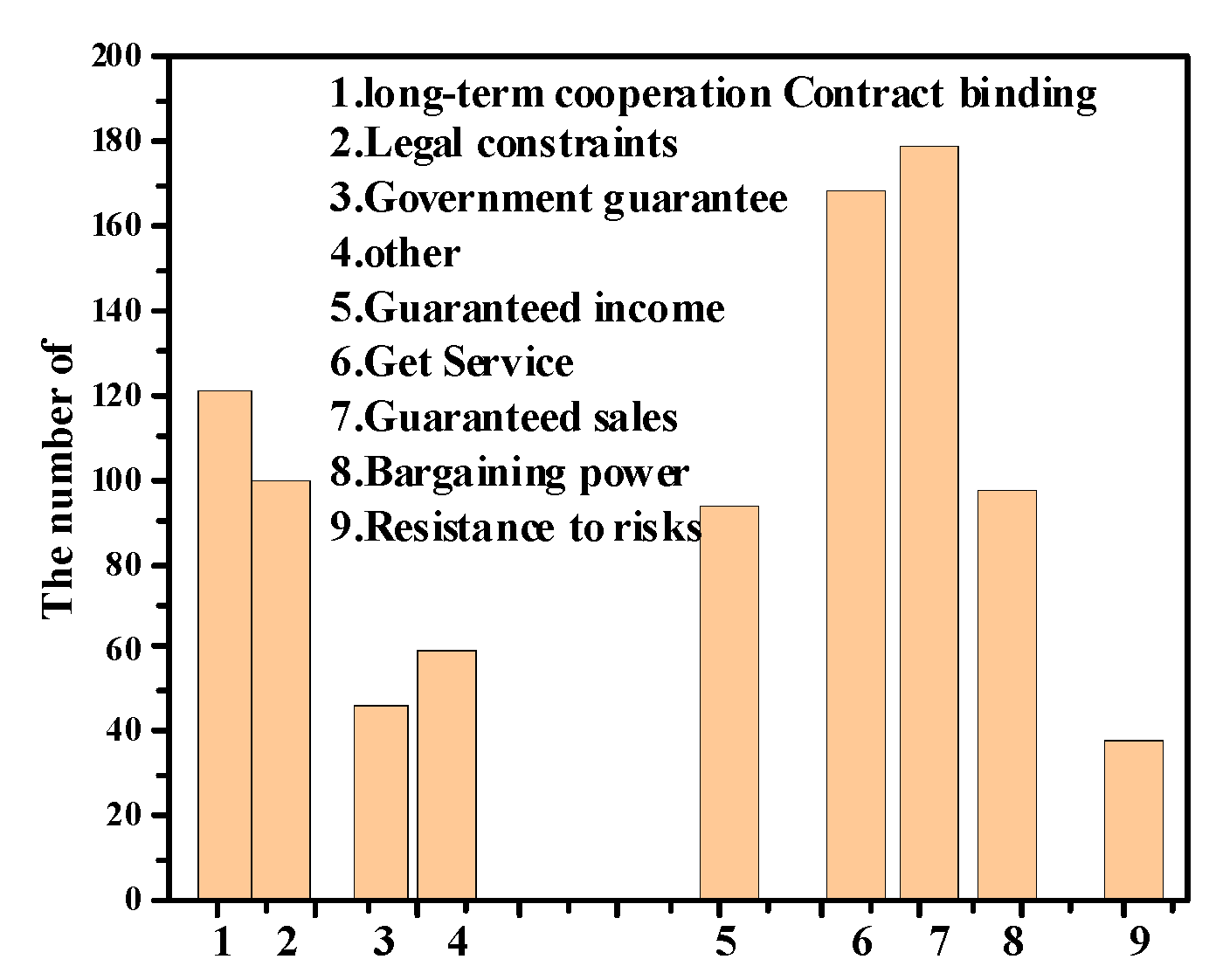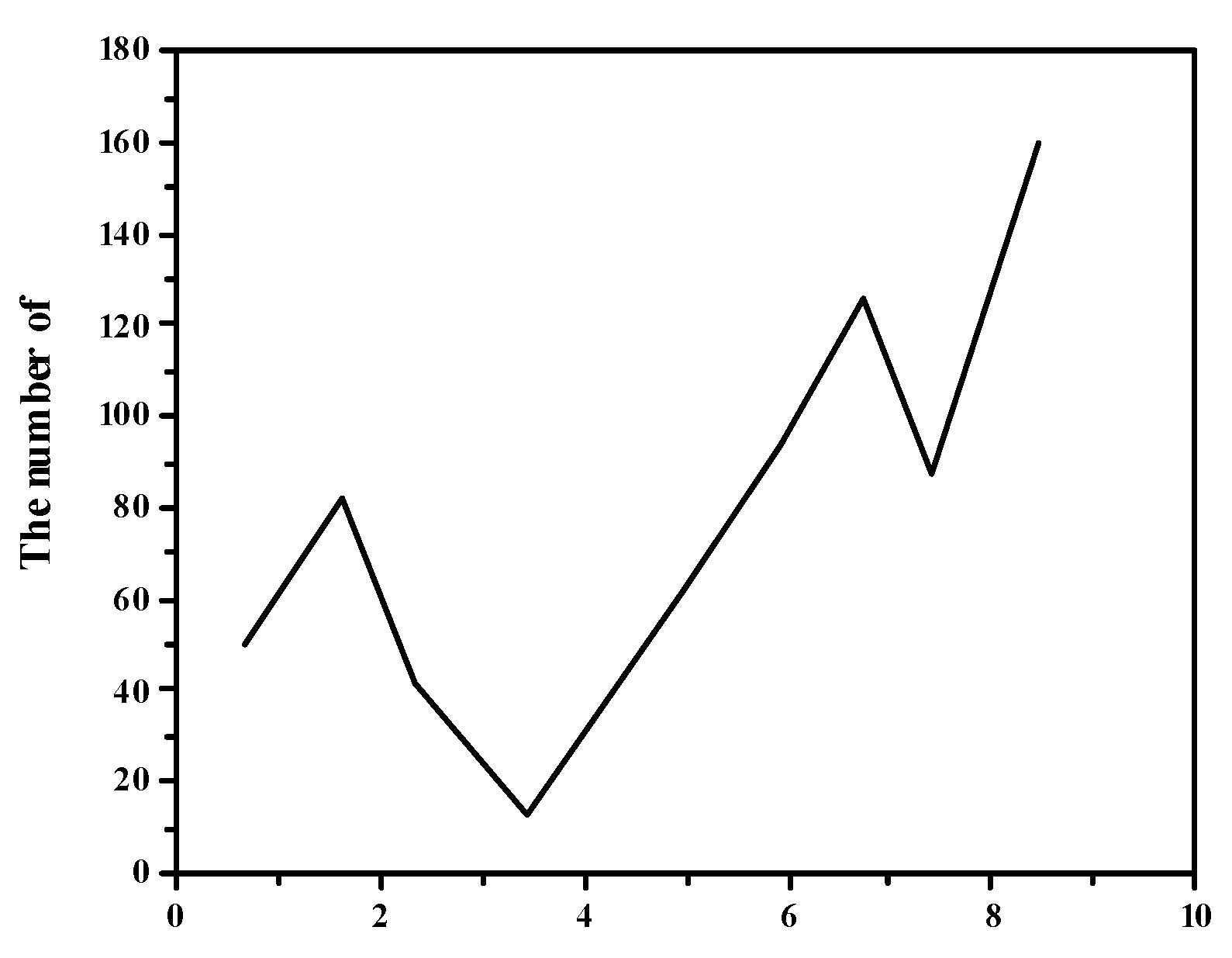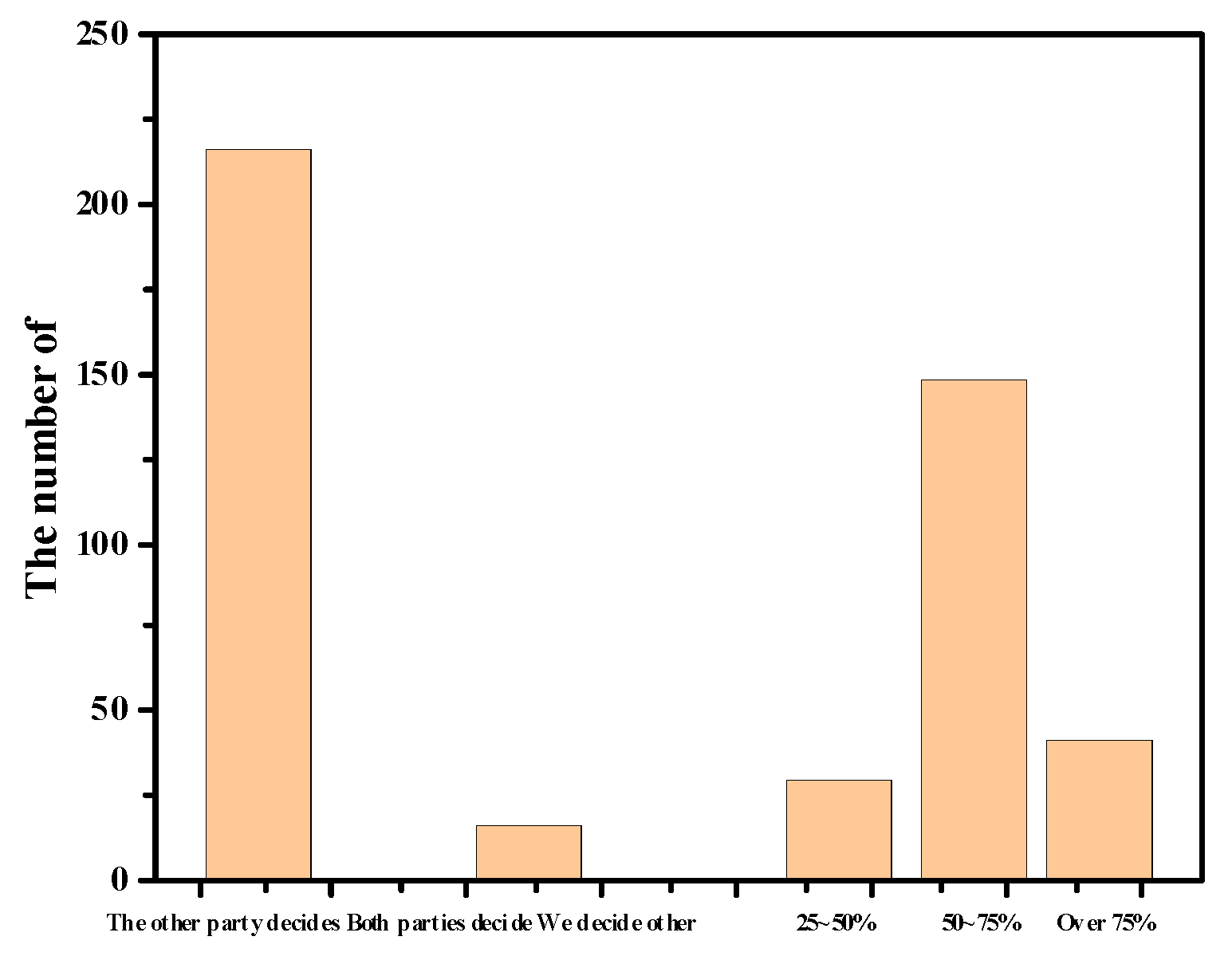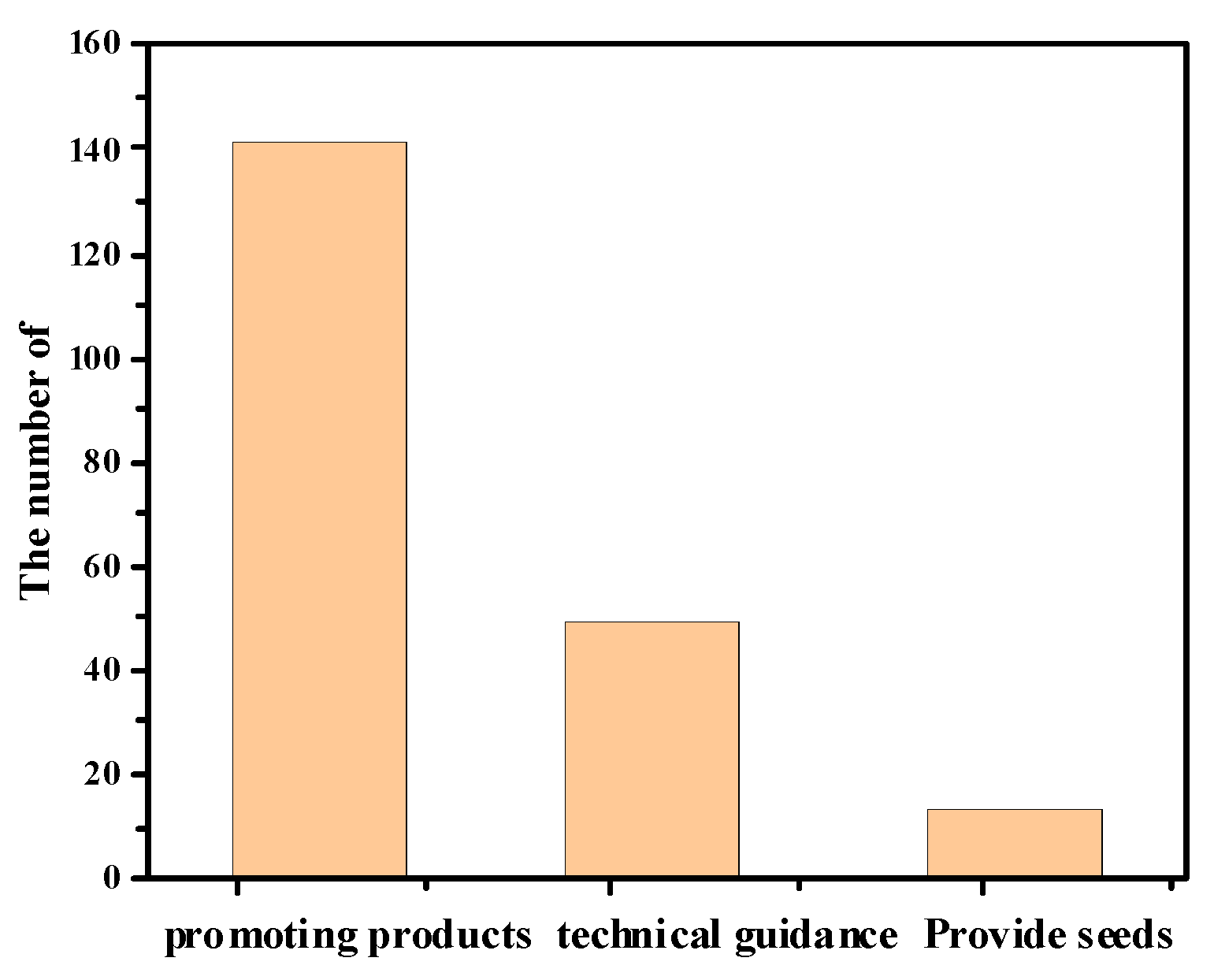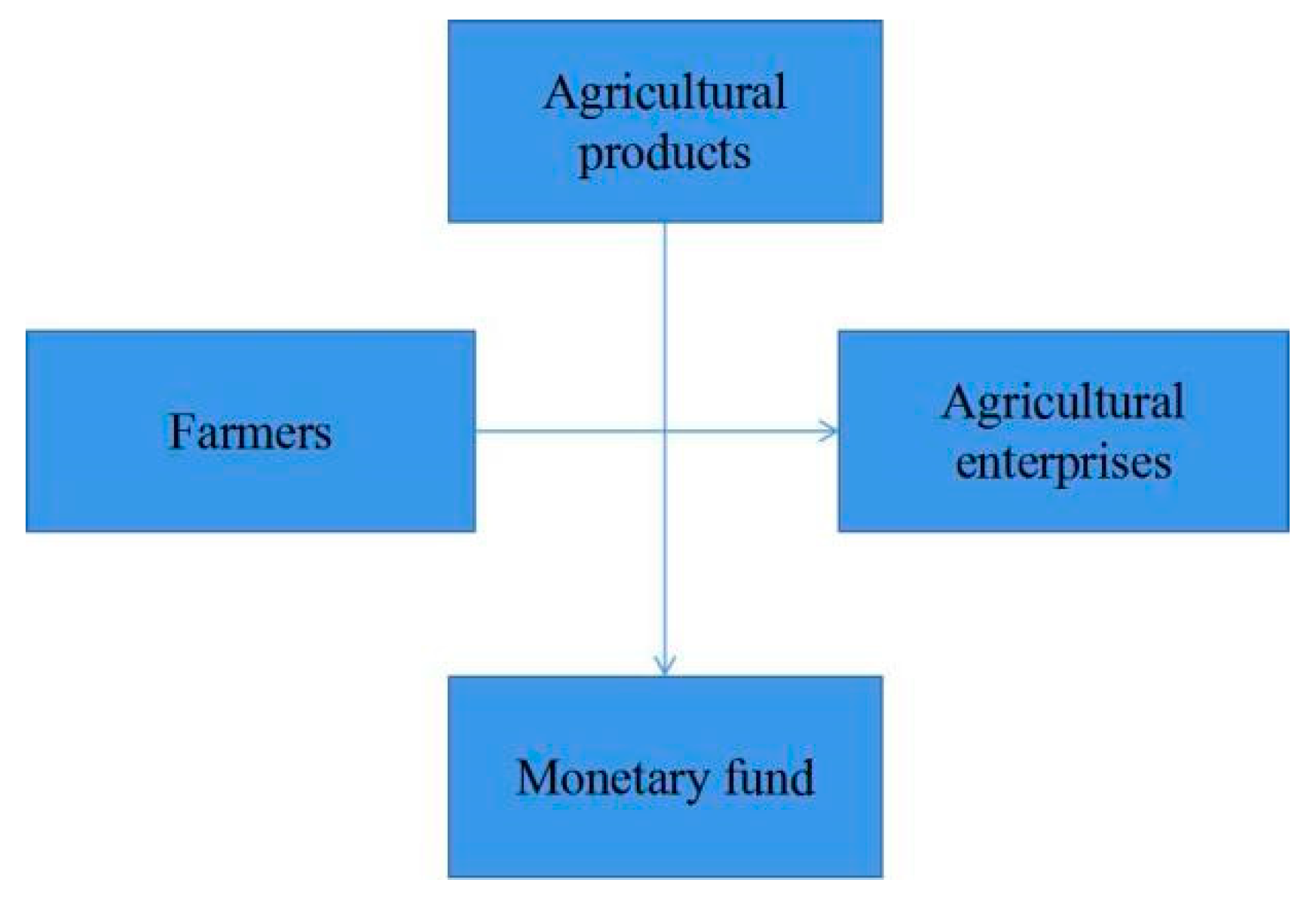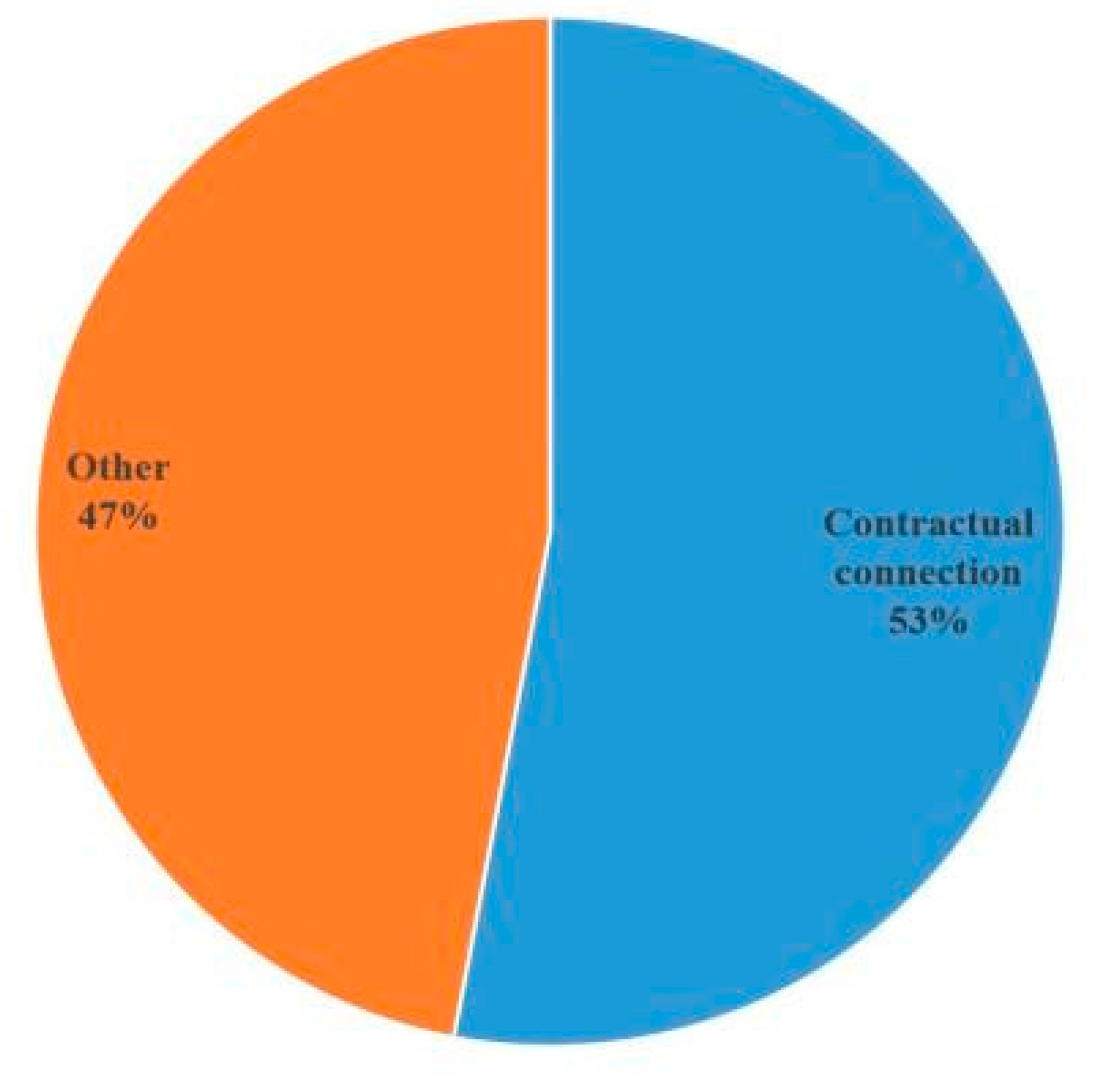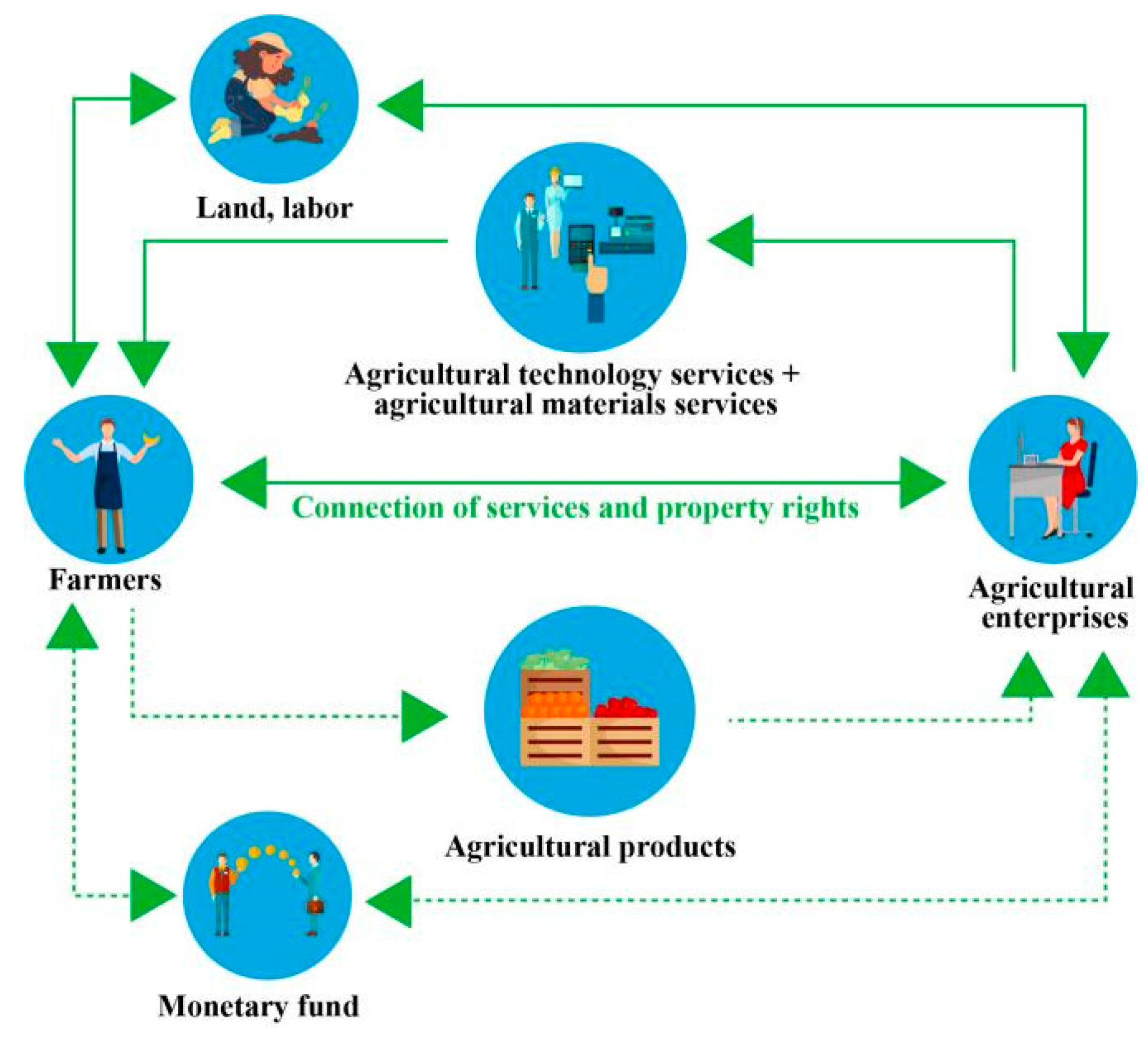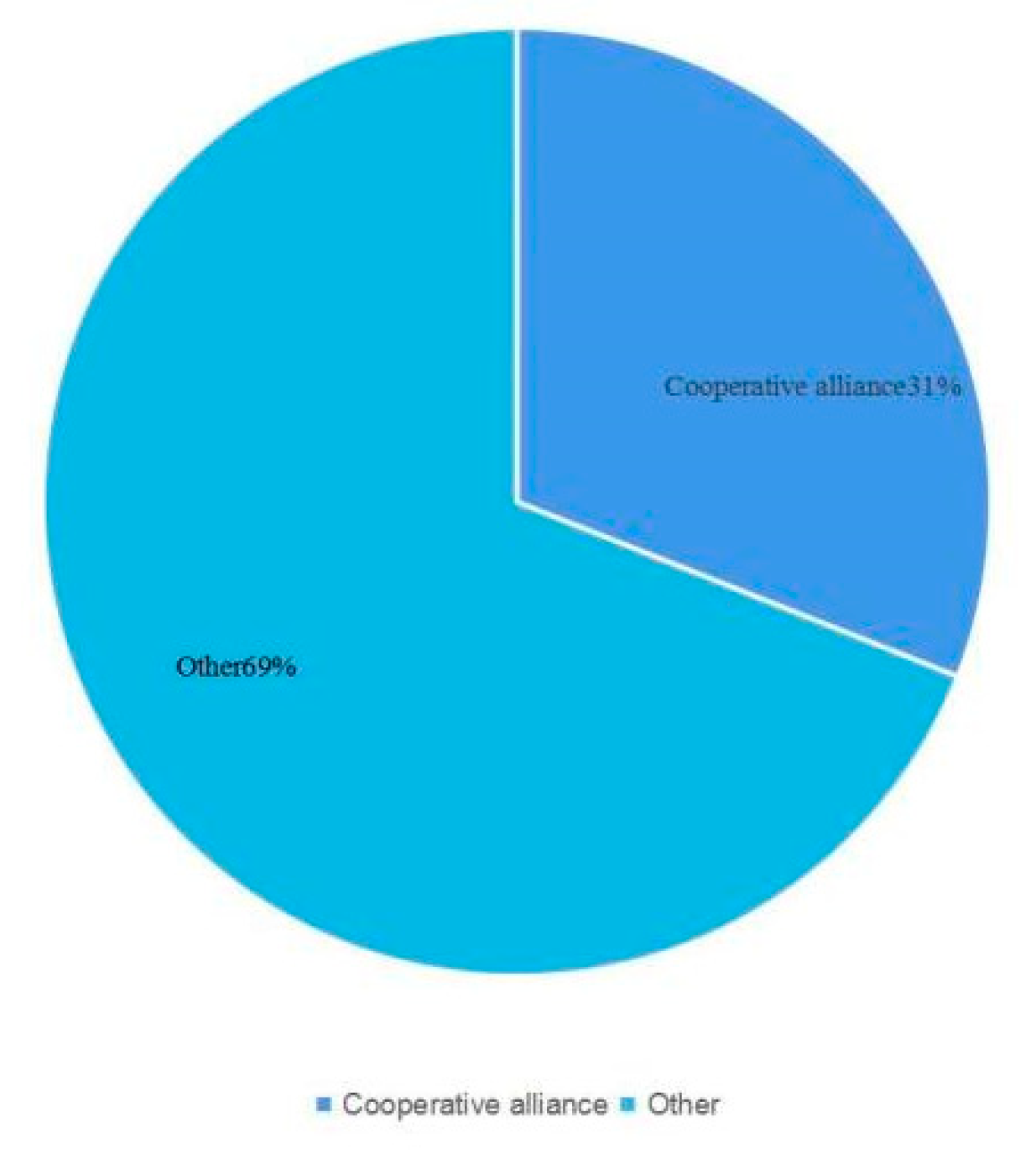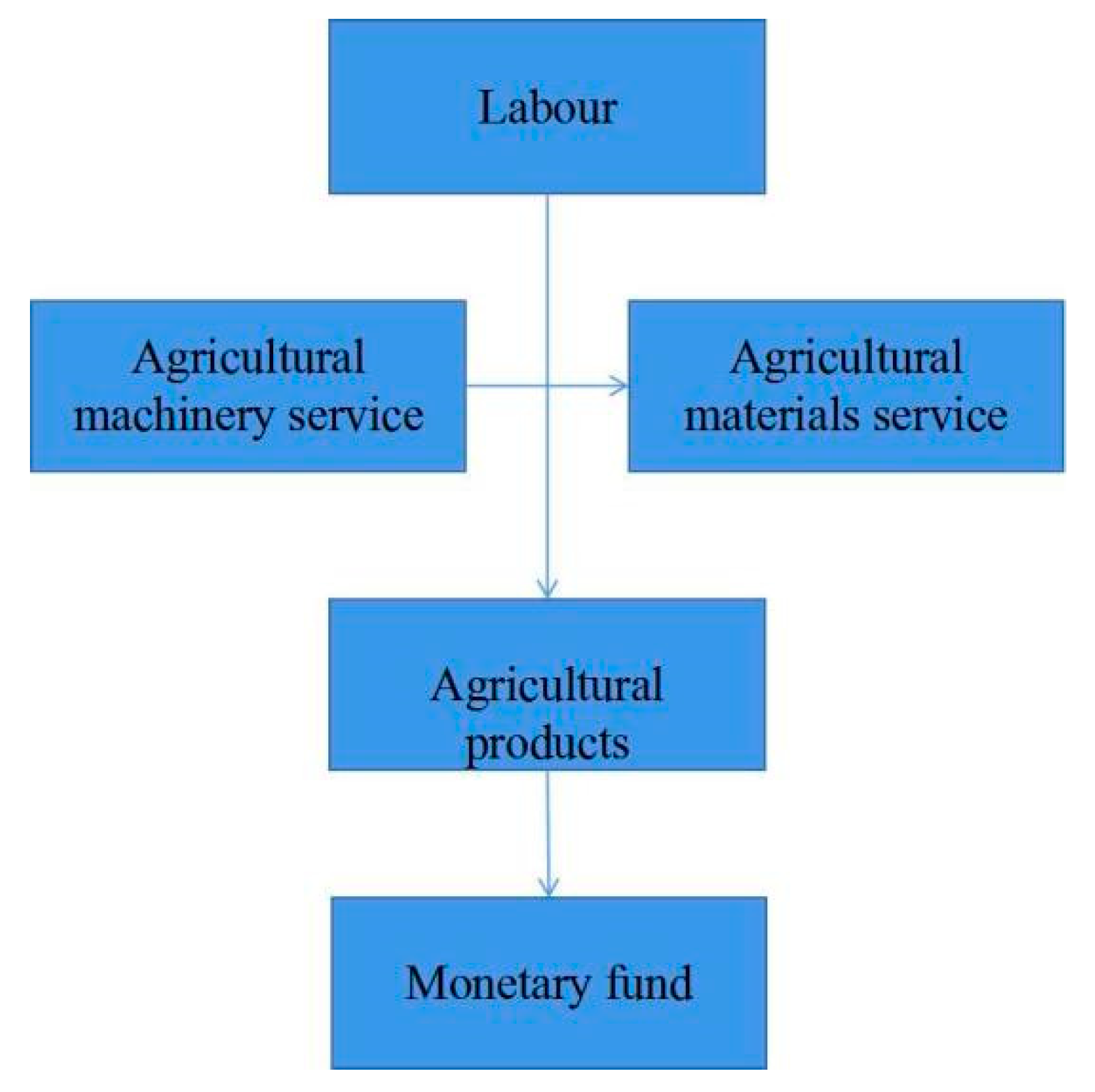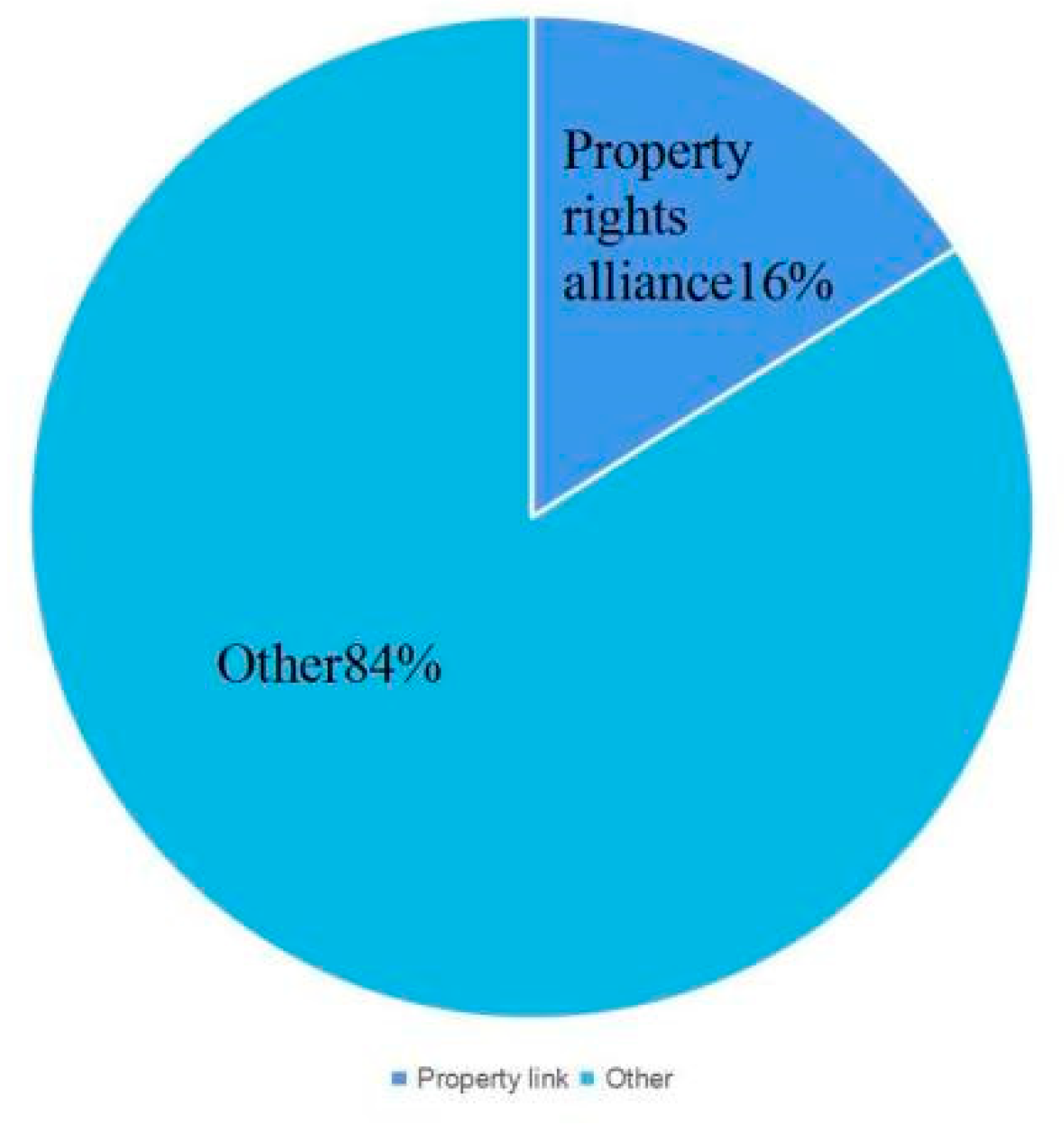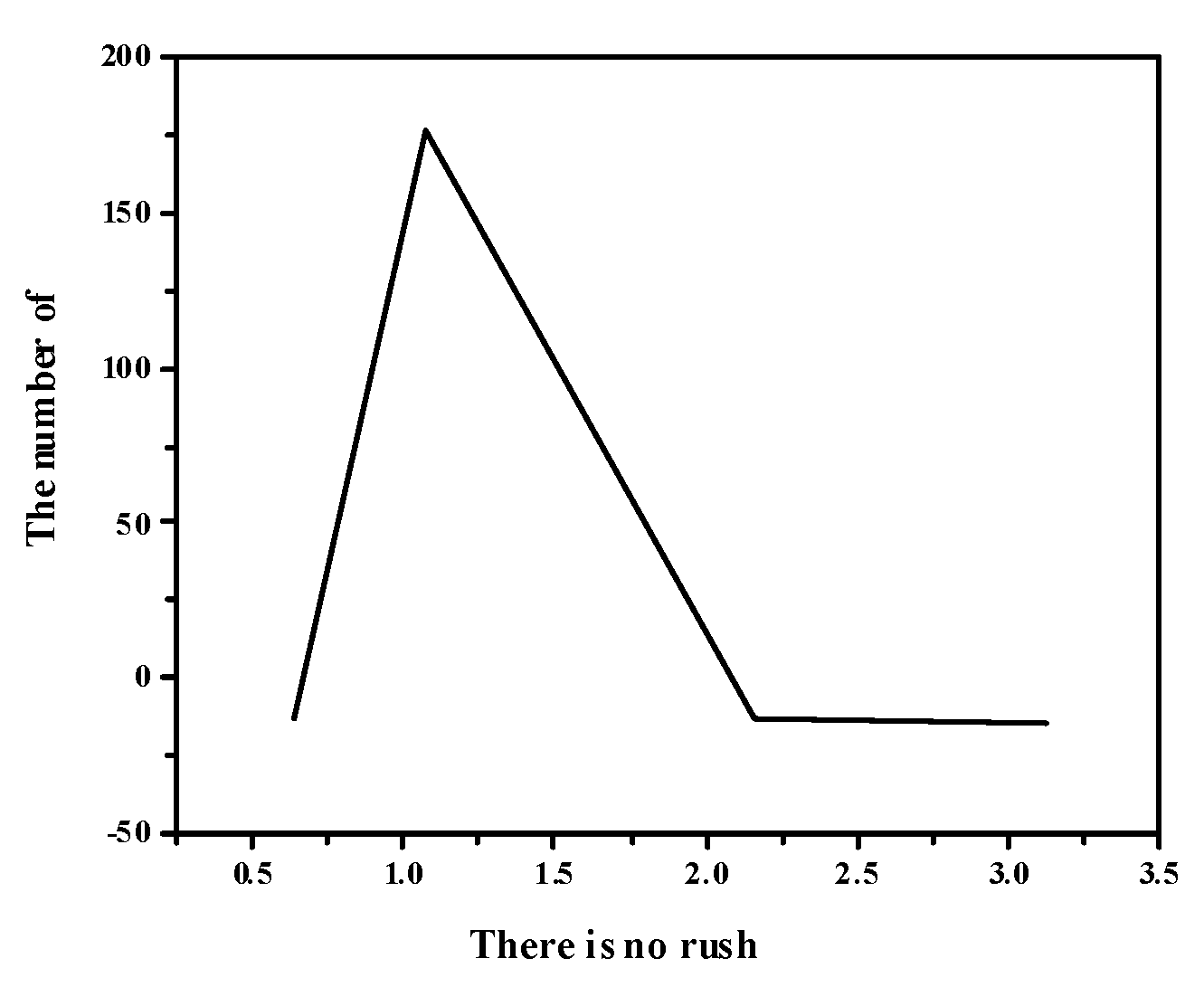1. Introduction
Since the concept of “green economy” was put forward in the 1980s, relevant organizations at home and abroad have successively carried out relevant research. To sum up, the green economy is a new economic concept that comes down in one continuous line from the concept of sustainable development and appears in the process of development model innovation. The green economy is a new economic form with market orientation, ecology, environment and resources as the elements, industrial economy as the basis, scientific and technological innovation as the support, coordinated development of economy, society, and ecology as the purpose, and maintenance of human living environment, scientific development, utilization of resources, and coordination of the relationship between man and nature as the main characteristics. From the development practice of countries around the world, the development of the green economy mainly needs to grasp the following points: First, we should take ecology, environment, and resources as the basic elements of the operation of the green economy system, and fully reflect the value and fairness of the use of ecology, environment, and resources; the second is to maximize the comprehensive benefits of economic, social, and ecological benefits as the fundamental goal of developing the green economy; third, we should take the promotion of traditional economic transformation and the construction of ecological economy as the main way to develop the green economy; fourth, we should take green scientific and technological innovation as the key means and important support for the development of the green economy. As China enters a new stage of modernization that promotes scientific development, the development of the green economy means taking the ecological foundation, environmental capacity, and resource carrying capacity as prerequisites, giving full play to the leading role of the ecological environment in economic development and the mechanism of pushing back economic development, gradually building green science and technology innovation and green mechanism innovation as the support, and taking green energy, green production, and green consumption as the basis. The economic operation system, which meets the requirements of environmental protection and green development, applies the concept of green development to the whole process of economic activities such as production, consumption, trade, and investment, so as to promote the comprehensive, coordinated, and sustainable development of economy, society, and ecology.
By the end of 2020, China’s anti-poverty campaign has achieved comprehensive results. From the proposal of the anti-poverty campaign to the victory of the campaign, the overall face of the countryside has been completely changed. Of course, the change of rural ecological environment in this process also indirectly promoted the emergence and development of new retail formats. The new retail formats have played a key role in promoting the revitalization and development of rural areas in China. The technological empowerment of township revitalization will gradually realize the further development of rural physical retail formats. The new retail business model is bound to gradually change the current stage of China’s rural and agricultural production mode, further accelerate the practical path of agricultural transformation and upgrading, and help the all-round development of rural areas. In this process, agricultural enterprises play a vital role. In recent years, the number of agricultural enterprises and the number of farmers driven by enterprises in many regions of our country have been growing, and the two sides have gradually formed diversified economic interest connections. At this time, as far as the current situation is concerned, there are still many problems in the bilateral economic interest connection mechanism, and how to explore the improvement and innovation of the connection mechanism based on these problems is the focus of this study. According to their own production and operation conditions and market conditions, both agricultural enterprises can freely buy and sell agricultural products in the market, relying on a highly free market economy. Leading enterprises can freely purchase agricultural products. The two parties do not sign a contract and the price will follow the market. There is no fixed economic connection and price constraint between farmers and enterprises. The economic activities of purchasing and selling agricultural products are pure market behaviors. Farmers are completely free “economic people”. The advantage of this method is that farmers have full autonomy in management, can decide transactions according to their own wishes, and seek their own maximum market interests. The relationship of interests is clear, and there are few conflicts and disputes. The purpose of this study is to find out the current situation of interest distribution and risk sharing in the interest connection mechanism of agricultural enterprises in Huizhou, find out the problems faced in the interest connection mechanism of agricultural enterprises and farmers in Huizhou, analyze the reasons and put forward targeted suggestions by combining the current situation of agricultural industry development in Huizhou and the current situation of interest connection between farmers and agricultural enterprises in Huizhou. It provides a reference for the further development of the benefit linkage mechanism of agricultural enterprises in Huizhou.
In recent years, the agricultural industry in Huizhou has developed rapidly, but the discussion on the benefit linkage mechanism is not deep enough. Therefore, it is of practical significance to study the benefit linkage mechanism among various business entities in Huizhou. First, it is conducive to exploring a close interest connection mechanism between agricultural enterprises and farmers in Huizhou, linking all links of production, supply, and marketing in agricultural production in Huizhou, so that farmers can enjoy the benefits brought by each link. At the same time, agricultural enterprises can also produce certain economic and social benefits, and promote mutual benefit and win–win results between enterprises and farmers. Second, it is conducive to promoting the healthy development of agricultural enterprises in Huizhou, expanding the scale of enterprises, absorbing local surplus labor in rural areas, and increasing the construction of rural public facilities. Third, it can enable decentralized small farmers to organize large-scale production, improve the production efficiency and market competitiveness of agricultural products, and increase the production income of farmers.
It is of great practical significance to strengthen the research on the relevance of agricultural enterprises, especially the theoretical research and empirical research on the way of interest connection between “enterprises and farmers”. First, the establishment of the relevant organizational model of Chinese agricultural enterprises can provide policy guidance and support theoretically, so that agricultural enterprises can achieve sustainable and healthy development; second, providing theoretical support for the establishment of the contractual relationship between “enterprises and farmers” can lay a solid foundation for subsequent research; third, we can give guidance and relevant suggestions for the development direction of the “agricultural enterprises and farmers” organization model and provide a reliable basis for the development theory of modern agricultural industry in China.
Institutional change can accelerate and effectively promote the growth of the agricultural economy. This change increases the freedom of human activities, reduces taxes, formulates laws to protect production and operation, enhances the mobility of society, regions and occupations, strengthens political participation, improves investment, and strengthens education. In the process of implementing the sustainable development strategy, China has actively explored and promoted the green development of the economy and society, and has made remarkable achievements. It is mainly reflected in two aspects: the first is the theoretical exploration. A theoretical framework of green development, guided by the scientific concept of development and ecological civilization and supported by ecological construction and environmental protection, the construction of a “two oriented society”, and the development of the green economy, has been initially established. The new industrialization road, circular economy, low-carbon economy, cleaner production, energy conservation, and emission reduction proposed and implemented by governments at all levels basically belong to the broad green economy category. The second is the exploration at the practical level. All regions and departments have actively promoted the development of the green economy, vigorously carried out ecological construction and environmental protection projects such as natural forest protection projects, conversion of farmland to forest projects, construction of natural reserves, increased investment in ecological and environmental protection infrastructure construction, and successively launched major projects and pilot demonstrations in circular economy, energy conservation, and consumption reduction. In particular, the National Twelfth Five Year Plan specifically discusses “green development” and proposes a number of specific measures to promote the “green economy” as an important national and local development strategy. Based on a survey of 1232 wheat growers in Pakistan in April and May 2019, the production risk of weather shocks on wheat farms and the effectiveness of physical, unphysical, and innovative management strategies to reduce crop damage were estimated by VE Elahi et al. Parametric and non-parametric measurement techniques were used to approach the research objectives. The findings suggest that the adverse effects of extreme weather events on wheat crops increase with extreme weather events, and the damage occurred closer to the harvest period. Results of the propensity score matching (PSM) method found wheat loss when crops experienced intense thunderstorms, storms, and hail [
1]. Major statistical indicators of structural changes in agro-industries and the health and contribution of small farms to agriculture as a whole are reviewed in Afanaseva et al. This work is aimed at defining the prerequisites for the formation of cooperatives by Russian farmers. This is extremely important because small farms produce nearly half of the country’s total agricultural output, own 37 percent of the arable land, 56 percent of the cattle, and secure one in four jobs. Through the research, we found a series of disadvantages affecting the development of small farms. They lack modern technology, efficient staff, working capital, and have marketing problems [
2]. Hooijmaaijers examined the growth of China’s foreign direct investment (COFDI) in the BRIC countries from 2009 to 2019, the value of China’s construction contracts, and the extent of bilateral trade between China and Brazil, India, Russia, and South Africa [
3]. Some scholars believe that “the key for us to correctly construct the interest relationship between enterprises and farmers is to establish the market dominant position of farmers and maintain their economic and legal independence; we should cultivate agricultural cooperative economic organizations as the intermediary organization carrier for the interest connection between farmers and agricultural leading enterprises; the interest connection mechanism we want to build should be able to make the interest demands between farmers and leading enterprises consistent.” Chen, X. et al. discussed the impact of agricultural industrialization organizations on the quality of agricultural products. Through the investigation of lychee growers in Guangdong Province and its surrounding areas, the indicators suitable for the measurement of lychee quality were designed from the two dimensions of safety and texture, and the assumptions proposed in their paper were tested by factor analysis, correlation analysis, and an OLS model. The results showed that the participation of agricultural industrialization organizations played an important role in improving the quality of lychee growers. Unified management and standards through enterprises, cooperatives, associations, and other industrial organizations is an important way to large-scale production of lychee, strengthen their respective advantages, share risks, and achieve mutual benefit and win-win results. The government departments should play a leading and propaganda role, provide financial and technical support, improve the service system of lychee industrialization, cultivate leading lychee enterprises, and accelerate the development of lychee professional cooperatives, associations, and other intermediary organizations, so that they can become the main standardized and competitive market players [
4]. Xiaolu, W. U. and others used qualitative and quantitative methods to analyze the mechanism of scientific and technological innovation on the integration of industrialization and urbanization. Through empirical analysis of relevant data in Henan Province, they proposed an integrated development path driven by scientific and technological innovation [
5].
In foreign countries, the main organizational form of agricultural industrialization in some countries is an agricultural cooperative organization composed of small and medium-sized enterprises. The United States, Japan, and France are the most representative of the research on the interest linkage between agricultural enterprises and farmers. It can be roughly divided into the following categories: first, the shareholding system, which refers to how farmers invest in capital, land, labor, technology and other production factors for company management; second, the contract system refers to the contract signed by farmers and companies to establish the contractual relationship. Japan encourages small and medium-sized enterprises to join agricultural cooperative organizations and jointly carry out activities such as raw material supply, agricultural production, agricultural product processing, and agricultural product sales. From the perspective of the government, the cooperative organization, as a communication institution, maintains and conveys the laws and policies of the government. From the perspective of farmers, the agricultural cooperative organization maintains the interests of farmers and improves their own income. In France, the agrofood complex is the main connection form for the development of agricultural industrialization, which is led by food companies and feed companies. Agricultural cooperative organizations are not only responsible for the production and supply of agricultural means of production, but also for the purchase, processing, and sales of agricultural products. On the one hand, agricultural cooperative organizations are the representatives of the interests of agriculture, farmers, and rural areas; on the other hand, they are the implementers of government policies and laws. Other forms of organization are agricultural food complexes led by food industry companies and feed companies. The agrifood complex realizes vertical leadership over agricultural producers, and manages and guides agricultural producers through established consultants. From the whole research situation, scholars at home and abroad have studied the interest linkage mechanism of agricultural enterprises from many aspects. The domestic research includes three aspects: the interest linkage mechanism, the model of agricultural industrialization, and the countermeasures to improve the interest linkage mechanism of agricultural enterprises. The foreign research on the interest linkage between the various business entities of agricultural industrialization is generally analyzed from the perspective of transaction cost theory, asset specificity theory, industrial organization theory, etc. It mainly covers agricultural industrialization management, agricultural organization and mode, and the agricultural interest linkage mechanism.
Generally speaking, foreign agricultural industrialization models are mostly large-scale agricultural enterprises established by direct investment in agriculture by industrial and commercial capital, and form agricultural integration led by companies; or large companies may sign contracts with farmers to connect the pre production, mid production and post production links of industrial production in the form of contracts, so as to form an agricultural industrial chain and drive the integrated development of agriculture.
On the basis of this study, this paper proposes a study on the improvement of the mechanism of bilateral economic interest linkage between agricultural enterprises and farmers under the new retail format promoted by the rural ecological environment. Through the analysis of the benefit linkage mechanism between agricultural enterprises and farmers, this study uses Huizhou’s data and cases to summarize the existing problems of the actual benefit linkage mechanism, reflect the unreasonable phenomena in the development of the benefit linkage mechanism between agricultural enterprises and farmers in individual regions, and deeply analyze the problems in the benefit linkage mechanism for farmers, from the development of cooperative economic organizations and capital investment. We will focus on the innovation and improvement strategy of the bilateral economic benefit linkage mechanism from the perspective of industrialization operation mode innovation.
2. Materials and Methods
In recent years, China has vigorously promoted the integrated application of the Internet of Things, Big Data, artificial intelligence, and other new-generation information technologies in all links of agriculture and rural areas, and promoted the vigorous development of new rural business forms and new models. The development of the green economy is a long-term, arduous, and complex systematic project. It requires not only active reform and exploration in the economic field, but also corresponding reform and innovation in social management and other fields, and comprehensive application of economic, legal, administrative, scientific and technological, publicity, and education measures. Only in this way can we gradually build a green economy operation system that meets the requirements of ecological civilization development and promotes the healthy development of China’s green economy.
First, rural e-commerce continues to grow. Rural e-commerce is developing rapidly. From January to November 2021, the national rural online retail sales reached 1.85 trillion yuan, a year-on-year increase of 13.3%; the online retail sales of agricultural products reached 382.42 billion yuan, a year-on-year increase of 2.4%. New formats and models such as live broadcast e-commerce, community group purchase, fresh e-commerce, and cross-border e-commerce have become new highlights. In 2020, the total cross-border e-commerce retail import and export of agricultural products nationwide reached about 44.9 billion yuan, an increase of 19.8% year-on-year.
Second, the potential of rural consumption has been continuously released. With the gradual penetration of digital technology into the field of rural consumption and the accelerated development of online and offline integration, digital consumption has gradually become the mainstream mode of rural consumption. Information will be further disseminated into villages and households to provide farmers with “one-stop” services such as public welfare, convenience, and e-commerce. By the end of November 2021, 467,000 agricultural information agencies had been established and operated nationwide, providing 880 million people with various services for farmers and new agricultural business entities [
6].
Third, new forms of rural business are booming. The intelligent level of rural tourism has been greatly improved. By the end of August 2020, 86.2% of rural tourism spots have wireless network coverage, an increase of 4.1% year-on-year. The number of rural innovation and entrepreneurship leaders continues to grow. In 2021, 11.2 million entrepreneurs returned to their hometown, a year-on-year increase of 10.9%. More than 80% of entrepreneurship projects are primary, secondary, and tertiary industry integration projects, driving the rise of agricultural experience and e-commerce live broadcasting [
7].
At the same time, it should be noted that the development of new rural business forms and new models in China has the problems of unbalanced and insufficient development between regions and industries. There are weak links in the rural logistics system, and the brand effect of rural e-commerce is not strong. The supply of rural scientific and technological innovation is insufficient, which cannot meet the needs of innovation and entrepreneurship; the income gap between urban and rural residents is still large, and the rural consumption potential has not been effectively released; the standardization of rural new business development is insufficient, and the sustainable profit model needs to be explored urgently [
8].This paper assumes that large-scale agricultural scale development is the most basic feature of modern agriculture in China. The emergence of large-scale agriculture is related to three important factors. First, it is related to the land system reform; second, it is related to the transfer of rural surplus labor; and third, it is related to the experience and management methods of dealing with agricultural enterprises and farmers.
The green economy is also called the environmental protection economy and low-carbon economy. This economic form is different from the traditional industrial economy, but it is based on the traditional industrial economy. To put it bluntly, the green economy is an environmental protection economy; that is, in the process of economic development, more attention is paid to protecting the ecological environment, and more economic forms are derived from ecological environment protection. For the investigation of the current situation, specific cases are involved here, taking Huizhou City, Guangdong Province as an example [
9].
On the whole, the development of modern agricultural industry in Huizhou has achieved preliminary results. In 2017, the proportion of the three industries in GDP was 4.3∶52.7∶43. From the data, Huizhou’s GDP is $5347.49 million, and the GDP of the primary industry is $232.53 million, with a growth rate of 4.5%, accounting for 9.8% of the total primary industry in the Pearl River Delta. Due to the continuous development of Huizhou’s primary industry, the total volume is increasing, but the growth rate is not as fast as that of the secondary and tertiary industries, so the proportion of the primary industry in the industrial structure is declining. In general, the performance of the industrial structure in regional development is that the proportion of primary and secondary industries continues to decline and the proportion of tertiary industries continues to rise. Therefore, with the development of Huizhou’s industry, the proportion of agricultural industry in the whole industry has decreased, but the output value has continued to grow. The research objects are some agriculture-related enterprises in Huizhou. In order to meet the needs of the research, the survey was arranged from mid-July to the end of August, which lasted 45 days, and the actual survey lasted about 30 days. The research object includes part of the agriculture-related enterprises in Huizhou, a total of 105, and 220 households were surveyed. In the design of the questionnaire, detailed questions cover the basic information of each research object, agricultural production and operation, the relationship between farmers and agricultural enterprises, as well as the core issues related to the construction of the interest association mechanism. During the investigation, questionnaire distribution and field interviews were combined. In the enterprise research, questionnaires were distributed and representatives of individual enterprises were interviewed to obtain data and case materials, which were guaranteed to be used in article writing on the premise of not harming their interests. In the peasant household survey, the method of village selection was adopted, and villagers were selected in key rural areas for questionnaire distribution and field interviews, so as to obtain data and case support. This study selected 105 agriculture-related enterprises in Huizhou to conduct research in the form of questionnaires and interviews with enterprise leaders. A total of 105 questionnaires were distributed and 94 valid questionnaires were collected, with an effective response rate of 89.5%.
4. Discussion
4.1. Increase the Intensity of Capital Investment and Enhance the Competitiveness of Leading Enterprises
The green economy is an economic structure, growth mode, and social form with efficiency, harmony, and sustainability as its development goals and ecological agriculture, circular industry, and sustainable service industry as its basic contents.
- 8.
We will continue to increase development funds for industrialized agricultural operations and increase subsidies for industrialized agricultural operations
Compared with developed countries, the amount of agricultural subsidies in China is much less, and the investment in agricultural infrastructure is also seriously insufficient, which has caused a quite unfavorable situation for the development of China’s agricultural industry [
53]. On the one hand, it has caused the deterioration of agricultural production conditions and production environment, and the decline of production capacity; on the other hand, although many places are rich in agricultural natural resources, the policies of agricultural industrialization are also very reasonable, and the enthusiasm of leading enterprises and farmers is also very high, they are helpless due to the lack of start-up funds. Therefore, the government should invest positive agricultural funds, especially increase the special support funds for the operation and development of agricultural industrialization, promote and promote the construction of leading enterprises and agricultural production bases and processing bases, and enhance their ability to drive farmers to pull the market [
54].
- 9.
Expand agricultural industry venture capital funds
At present, “the transformation rate of agricultural scientific and technological achievements in China is relatively low, which is mainly driven by leading enterprises. As the transformation of agricultural scientific and technological achievements is a high-risk market behavior, the state should establish corresponding venture capital funds and venture capital mechanisms to share the market risks borne by leading enterprises and improve the enthusiasm of leading enterprises”. In the United States, every state with a large proportion of agriculture has professional venture capital companies to provide necessary agricultural venture capital support for agricultural enterprises. China should also establish a complete agricultural risk investment system and policy system as soon as possible, gradually accumulate funds and gradually expand the scope of agricultural risk investment, so as to promote and promote the transformation of agricultural scientific and technological achievements and create conditions for the popularization and application of agricultural technology in China’s agricultural production [
55].
China’s agricultural venture capital funds can be composed of several types: First, China’s agricultural venture capital funds can be jointly funded by financial departments and banks as a national policy financing institution in agriculture. Second, local governments, leading enterprises, scientific research institutes and other institutions can jointly fund the establishment of local agricultural technology venture capital funds. Third, mobilize and encourage corresponding social organizations and individuals to invest or provide financing to agricultural high-tech enterprises. Fourth, set up agricultural technology venture capital funds in the development zones where agricultural high-tech enterprises are relatively concentrated.
- 10.
Reform China’s rural financial system and establish rural cooperative financial organizations
Due to the high risk of agricultural production and the weak ability of loan repayment, commercial banks in major countries have gradually contracted their financial business oriented to agricultural production. Leading enterprises’, farmers’ cooperative economic organizations’, and farmers’ difficulties in obtaining loans have become increasingly prominent. If this situation is not improved, China’s agricultural industrialization process will be seriously affected. China should learn from foreign experience, reform the existing system of rural credit cooperatives, and establish a real sense of rural cooperative financial service institutions [
56].
4.2. Develop Farmers’ Cooperative Economic Organizations
- 11.
Increase policy support
The development of the green economy is an important support for the construction of ecological civilization. On the one hand, the development of the green economy requires promoting the greening of the microeconomic field, promoting technological innovation, and promoting the development of green enterprises and green industries by eliminating backward production capacity and processes. On the other hand, the development of the green economy requires the promotion of the green economy in the macroeconomic field. By actively promoting economic restructuring, the proportion of the traditional economy with high resource consumption and heavy environmental pollution in the national economy will be gradually reduced and the proportion of the green economy will be increased. Farmers’ cooperative economic organizations are still in the primary stage of development in China, and their economic strength is still relatively weak. Therefore, governments at all levels should increase the introduction of some policies and measures conducive to the development of farmers’ cooperative economic organizations, and give them active policy and financial support. There should be special competent departments responsible for the development of farmers’ cooperative economic organizations; the financial department should arrange special support funds; industry, commerce, and civil affairs should clarify their registration methods, and improve and simplify relevant procedures and procedures; The financial sector should provide credit support. If conditions are ripe, it should immediately set up financial service institutions specialized in agriculture; relevant government departments should coordinate with each other, avoid mutual prevarication, truly form a joint force, and promote the rapid and healthy development of farmers’ cooperative economic organizations.
- 12.
Active guidance and standardized operation
Farmers’ cooperative economic organizations are jointly established by farmers and represent the interests of farmers. Therefore, in the construction of their internal systems, they must maintain the consistency with the interests of farmers, and constantly improve and standardize their operating mechanisms. First, “it is necessary to establish and improve the internal democratic management system, adhere to the principle of ‘the people have, manage and benefit’, and earnestly implement the system of ‘democratic decision-making, management and supervision’. Second, establish and improve the protection mechanism for the purchase price of agricultural products, and adopt the principle of guaranteed minimum purchase for the purchase of agricultural products by its members to protect the interests of its members. Third, establish and improve the benefit distribution mechanism. Establish a risk fund within it to keep consistent with the interests of farmers and actively implement the secondary return of their profits to farmers. Fourth, establish a financial disclosure system. The financial revenues and expenditures shall be disclosed to the members on a regular basis and subject to their supervision.
- 13.
Strengthen training and improve quality
As China’s farmers’ cooperative organizations are still in the primary stage of development, the overall quality of the employees is not high, and they lack the professional skills of agricultural industrialization, production technology, and market-oriented operation experience and ability. Therefore, it is imperative and urgent to do a good job in training the members of farmers’ cooperative organizations, especially the management personnel. First, the competent authorities should regularly organize training courses for the employees of farmers’ cooperation and organize personnel to take turns in training. Second, select key personnel to study in places where farmers’ cooperative economic organizations have developed well and learn from the advanced management experience of others. Third, recruit talents with professional knowledge background from the whole society to guide and manage farmers’ cooperative economic organizations, so as to improve the overall quality of the personnel of farmers’ cooperative economic organizations.
- 14.
Perform duties and active guidance
The competent agricultural administrative department shall assume the responsibilities of the leading department, actively carry out relevant investigation and research and summarize experience, and establish some farmers’ cooperative economic organizations with standardized articles of association, sound organization, perfect system, and a fair and reasonable interest connection mechanism as a model for learning, so as to be “visible, learnable and effective”. Strive to cultivate a number of farmers’ cooperative economic organizations with “large scale, good benefits, standardized and perfect operation mechanism, fair and reasonable interest mechanism, good effect in promoting the development of agricultural industry and strong ability to increase farmers’ income”.
4.3. Strengthen System Construction and Promote the Improvement of Interest Connection Mechanism
- 15.
Improve relevant laws and regulations on agricultural industrialization as soon as possible
In China’s current agricultural industrialization, the business model of order agriculture accounts for a large proportion. This model takes the contract as the carrier of interest connection, establishes and improves the relevant law enforcement system, supervises the performance and implementation of the contract according to law, and prevents the occurrence of breach of contract. It is a necessary measure to ensure the effective operation of this model. Relevant administrative departments shall implement the model text, witness and notarization system of order agricultural contracts, so as to prevent the emergence of illegal and invalid contracts and protect the interests of farmers as far as possible. Notarial offices shall strengthen their sense of service and give full play to their notarial functions. When trying agriculture-related cases, the court should, on the premise of ensuring fairness, simplify the procedures as much as possible, achieve rapid establishment, trial and execution, effectively reduce litigation costs, strengthen judicial protection, and protect the interests of both parties.
- 16.
Strengthening enterprise system construction
Perfect and sound system is the foundation for enterprises to maintain vitality and stability. For modern enterprises, system construction is particularly important. System construction includes enterprise internal system construction and enterprise external system construction. The internal system construction of enterprises requires enterprises to establish and improve the modern corporate governance structure, so as to systematize and institutionalize the internal management of enterprises. The construction of external systems of enterprises requires the construction and improvement of relevant supervision and restraint mechanisms to effectively protect the interests of farmers. In addition, the corresponding social supervision mechanism should be introduced. The government has the right to inspect and audit the operation and business of enterprises, and restrict and regulate the behavior of enterprises through legal, economic, and administrative means.
- 17.
Establish and improve the agricultural insurance system
We will improve the accuracy of weather forecasting, especially medium- and long-term weather forecasting, enhance our ability to monitor, predict, respond to and prevent climate change and extreme weather and climate events, and strengthen drought resilience and preparation for major extreme days such as floods and low temperatures (early warning, forecasting and service capabilities of events, establishing and improving more targeted and operable emergency plans for major meteorological disasters, strengthening information communication between departments, establishing and improving coordination and linkage mechanisms, and comprehensively improving the ability to prevent and deal with accidents and disasters). At the same time, we should strengthen the publicity of extreme weather forecasting, improve the disaster prevention awareness of the whole people, and the ability to avoid risks and save themselves, and do a good job in preparing for self rescue of food production in the face of extreme weather, and “Be prepared for disaster prevention and respond to disaster reduction” to minimize the impact of extreme weather. In order to reduce the natural and market risks faced by agricultural production, farmers and leading enterprises should be encouraged to actively participate in agricultural insurance or establish risk funds [
57]. A certain proportion of the operating profit from the agricultural industrialization operation is extracted as the risk guarantee fund, which is used as the compensation for farmers when they are exposed to natural risks, to protect the interests of farmers and to stabilize the raw material base of leading enterprises. It is conducive to the healthy and stable development of agricultural industrialization.
- 18.
Reduce agricultural environmental emissions
The Ministry of Agriculture and Rural Affairs and the National Development and Reform Commission has strengthened overall coordination, reviewed the overall deployment and important planning of carbon reduction and fixation in agricultural and rural areas, coordinated research on major policies and important work arrangements, coordinated solutions to key and difficult issues, and guided and supervised the solid work. The Ministry of Agriculture and Rural Affairs is specifically responsible for organizing the implementation of carbon reduction and fixation in agricultural and rural areas, carrying out follow-up evaluation, and strengthening supervision and guidance. Local agricultural and rural areas as well as development and reform departments have strengthened policy convergence and work docking, and prepared regional agricultural and rural carbon reduction and fixation implementation plans based on local actual conditions, to ensure the consistency of policy orientation and pace. Strengthen the implementation of existing agricultural and rural carbon reduction and fixation support policies. Research and improve the supporting policies for key tasks, promote the research on major issues and the formulation of policies and regulations, and strengthen positive incentives and negative constraints and other measures to create and improve supportive policies conducive to promoting the emission reduction and carbon sequestration of agricultural and rural areas. Study and establish the accounting and certification system, and explore the effective path of agricultural carbon emissions trading. We will carry out pilot projects to apply typical technology models in an orderly manner and create a number of low-carbon and zero- carbon pilot areas for agriculture and rural areas.
5. Conclusions
In contemporary China, taking economic construction as the center is the key to rejuvenating the country, and development is still the key to solving all our problems. The concept, principle, and goal of ecological civilization construction should be deeply integrated into and fully integrated into all aspects and the whole process of China’s economic, political, cultural, and social construction. Through the development of the green economy, we should promote the fundamental change of the mode of production and lifestyle, and promote the realization of green economic, social, and ecological development, circular development, and low-carbon development. This study analyzes the interest linkage mechanism between agricultural enterprises and farmers, and uses the data and cases of Huizhou to summarize the problems existing in the actual interest linkage mechanism, reflecting the unreasonable phenomena in the development of the interest linkage mechanism between agricultural enterprises and farmers in some areas. This paper also deeply analyzes the problems in the farmers’ interest connection mechanism and puts forward corresponding countermeasures and suggestions on this basis to enrich the research on the development of Huizhou’s agricultural industry.
At present, the development of the interest connection between agricultural enterprises and farmers is still in the initial stage, and the research on this aspect is not perfect. There are great restrictions on the interest connection between some agricultural enterprises and farmers. This paper focuses on and analyzes the problems of the interest connection mechanism between agricultural enterprises and farmers, so as to solve some restrictive factors affecting the self-development of agricultural enterprises and promote the rapid development of agriculture. The research results show that the main problems of the current agricultural enterprise linkage mechanism mainly include occurrence of default events from time to time; the instability of the linkage is not high, the linkage is not close enough and slightly loose, and there is a lack of risk sharing and value creation mechanisms. Through analysis, this paper believes that the main reasons for the above problems are the small number and scale of leading enterprises, weak value creation ability, asymmetric information between enterprises and farmers, lack of credit reporting system between farmers and agricultural enterprises, insufficient government policy support, and the external economic impact of agricultural enterprises.
On the whole, the development of the benefit linkage mechanism between agricultural enterprises and farmers is stable. Although the loose linkage mechanism accounts for a large proportion at the current stage, it has the basic conditions to form a further and deeper benefit linkage mechanism. In the aspect of countermeasures and suggestions, this paper puts forward specific countermeasures on how to improve the benefit connection mechanism between agricultural enterprises and farmers. The innovation of the interest linkage mechanism is a complex systematic project, which needs the active and steady promotion of relevant parties. We need to continuously promote the improvement of the interest linkage mechanism, and finally realize the consistency of interests between leading enterprises and farmers’ interest subjects, promote the rapid development of China’s agricultural industrialization, and make outstanding contributions to solving China’s rural, agricultural, and farmers’ problems. The hypotheses of this paper are verified.
The development trend and future direction of modern agriculture are:
1. Large-scale agriculture: Scale development of agriculture is the most basic feature of modern Chinese agriculture. The emergence of scale agriculture is related to three important factors. First, it is related to the land system reform; second, it is related to the transfer of rural surplus labor force; and third, it is related to the experience and management mode of dealing with agricultural enterprises and farmers.
2. New types of agricultural entities have emerged: The emergence of farmers’ professional cooperatives, family farms, large agricultural specialized households and leading agricultural enterprises, and the deepening of the professional division of labor among agricultural operation entities in the development of agricultural production, contribute to the realization of economies of scale and the improvement of labor productivity, thus creating more value.
The inadequacy of this paper is that the scope of the research object is not wide enough, which may make the research conclusion slightly one-sided. The research object adopts the method of random and targeted interviews. Due to the limitations of objective factors or the parties’ failure to fill in the report truthfully, the data is biased. Due to the limitations of the researchers themselves, they cannot obtain the most comprehensive data and can only use their best efforts to obtain data to support the research of this paper, which will inevitably lead to omissions. In addition, due to the influence of subjective factors such as personal theoretical foundation and epistemology, it is inevitable that the research will have some inaccuracies. It can only be guaranteed that under the conditions of existing materials, the data will be analyzed on the basis of the facts and the reality we know, and the conclusion will be reached.
